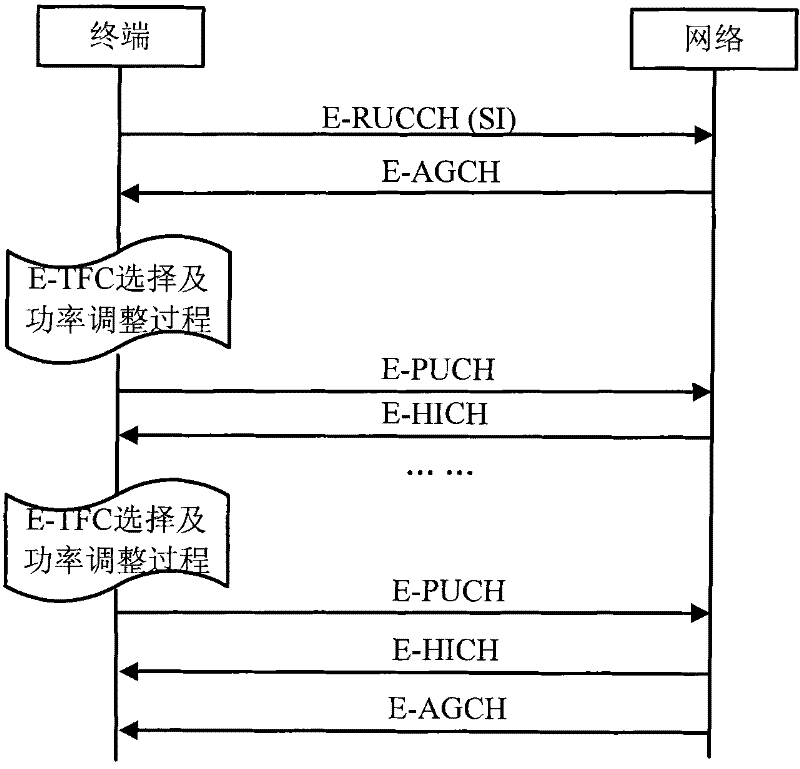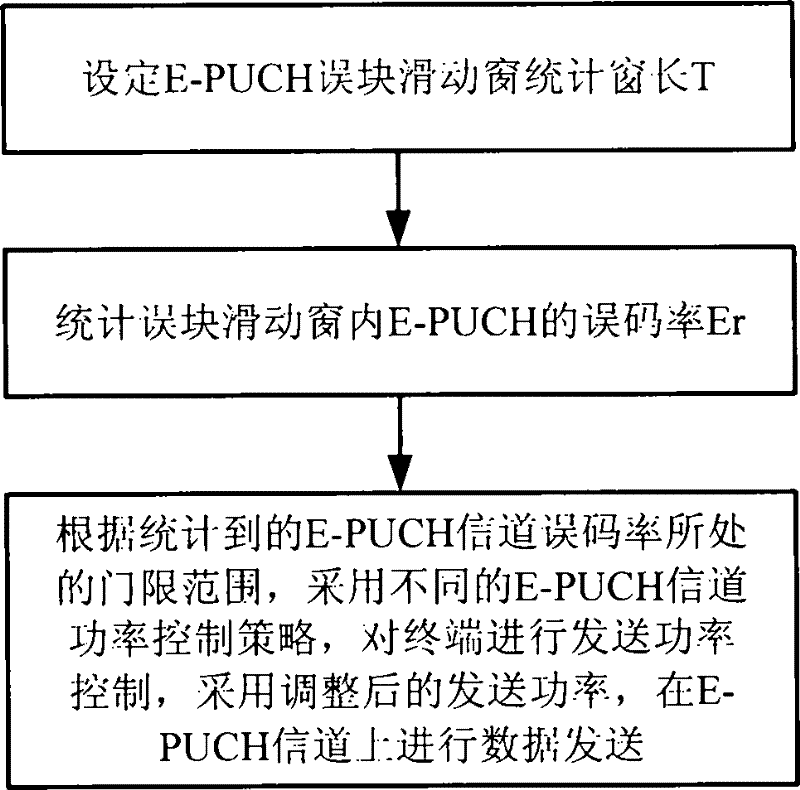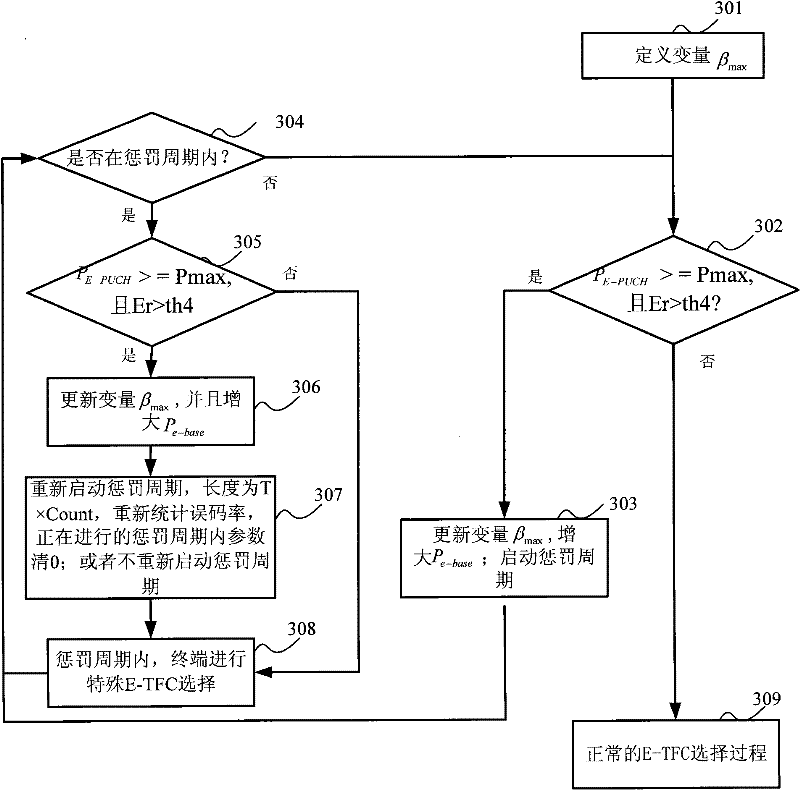Uplink control method for reducing error rate of TD-HSUPA (Time Division-High Speed Uplink Packet Access)
A control method and bit error rate technology, applied in the field of third-generation mobile communications, can solve problems such as the impact of terminal rate, achieve reasonable power control, improve and stabilize the rate, and reduce the number of attempts to send
- Summary
- Abstract
- Description
- Claims
- Application Information
AI Technical Summary
Problems solved by technology
Method used
Image
Examples
Embodiment approach 1
[0056] 101. Set the E-PUCH block error sliding window statistical window length T;
[0057] The window length is based on the number of scheduling times. The terminal starts to count the feedback information received from the network on the hybrid automatic repeat request (referred to as HARQ) acknowledgment indication channel (referred to as E-HICH) of the E-DCH transmission channel. HICH, the window length counter W is increased by 1, and when W increases to the window length T, it starts to slide.
[0058] Among them, T is the project realization experience value, the value range is [6, 640], and the preferred value is 64.
[0059] 102 count the bit error rate Er of the E-PUCH in the sliding window of the error block;
[0060] Through the acknowledgment (ACK for short) or non-acknowledgment (NACK for short) information fed back by the network on the hybrid automatic repeat request (HARQ for short) acknowledgment indicator channel (E-HICH for short), each time the terminal ...
Embodiment approach 2
[0075] 201-202. Consistent with 101 and 102;,
[0076] 203. The bit error threshold th1 and th2 used in 103 can be combined into one, called th3,
[0077] 203-1 When Er<=th3, the terminal considers that the bit error rate is acceptable at this time, and does not interfere. The power control of the E-PUCH channel is completely controlled by the TPC of the network, and responds to the TPC of the network in a timely manner.
[0078] 203-2 When Er>th3, the terminal judges whether the network increases the transmission power of the E-PUCH physical channel through TPC, and if so, responds; The step size upStep increases the transmission power on its own initiative, and increases the probability of successful transmission by increasing the transmission power of the terminal.
[0079] Among them, the value range of th3 is [5%, 100%], preferably 10% or 20%;
[0080] In this simplified implementation mode, because the judgment range of the bit error threshold is reduced, the implement...
Embodiment approach 3
[0083]If the bit error rate remains above the preset threshold after the transmission power adjustment in Embodiment 1 or Embodiment 2 above, the network has adjusted the transmission power of the E-PUCH physical channel to the maximum, or if the network has not adjusted, And the terminal increases the transmission power of the E-PUCH physical channel by itself through the method used in the first major step, and also makes it reach the maximum transmission power, then this implementation mode can be enabled; for the specific process, see image 3 .
[0084] 301. Define variable β max
[0085] 302. Judgment beta max Update condition, whether P E-PUCH >=Maximum transmission power Pmax, and the bit error rate Er>th4 on the E-PUCH channel that the terminal counts, if so, go to 303, otherwise go to 309;
[0086] Among them, the value range of th4 is [5%, 90%];
[0087] 303. Update beta max , and increase P with step size upStep e-base The value of is used to calculate the E...
PUM
 Login to View More
Login to View More Abstract
Description
Claims
Application Information
 Login to View More
Login to View More - R&D
- Intellectual Property
- Life Sciences
- Materials
- Tech Scout
- Unparalleled Data Quality
- Higher Quality Content
- 60% Fewer Hallucinations
Browse by: Latest US Patents, China's latest patents, Technical Efficacy Thesaurus, Application Domain, Technology Topic, Popular Technical Reports.
© 2025 PatSnap. All rights reserved.Legal|Privacy policy|Modern Slavery Act Transparency Statement|Sitemap|About US| Contact US: help@patsnap.com



